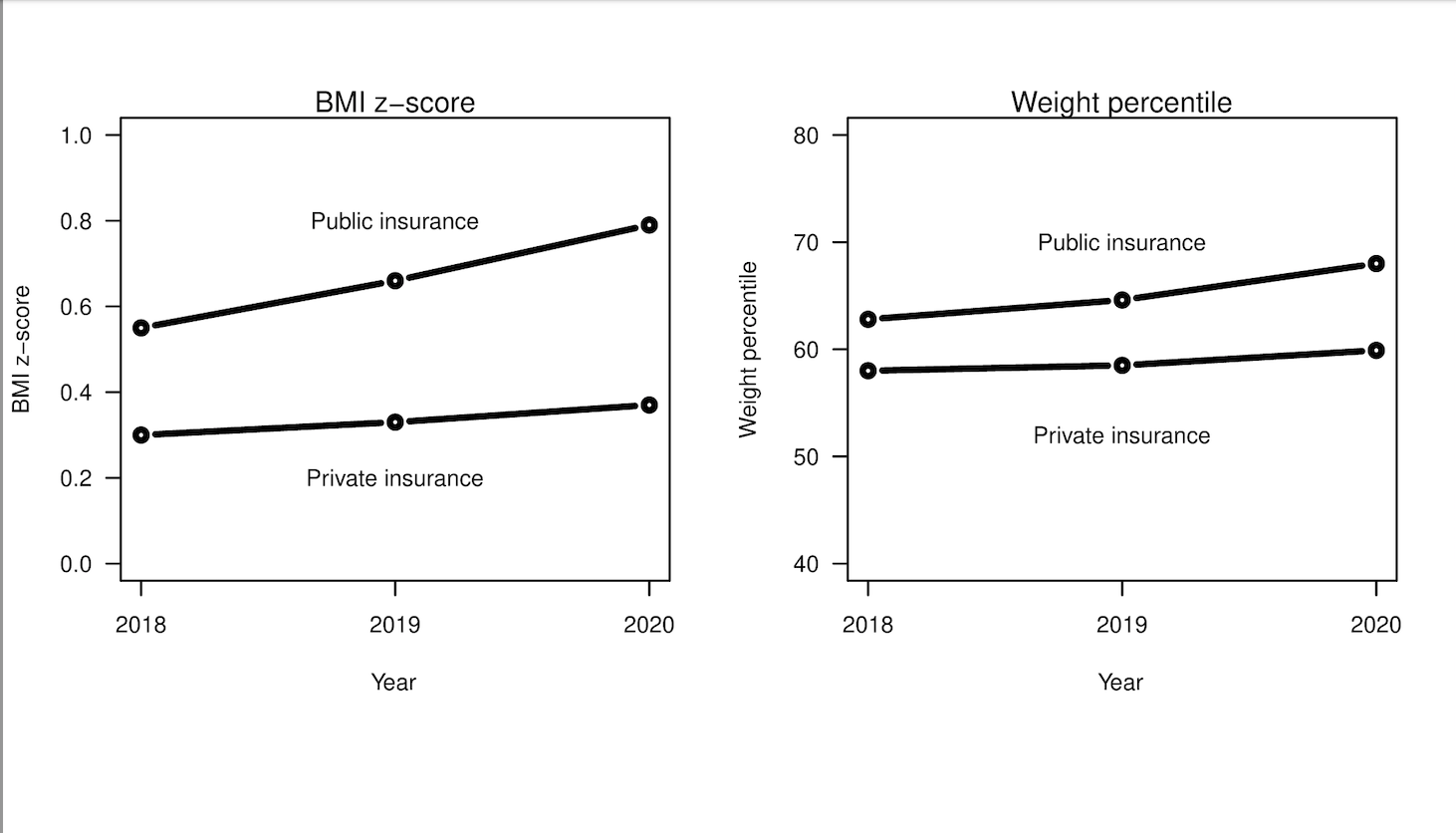Health Equity/Social Determinants of Health
Category: Abstract Submission
Health Equity/Social Determinants of Health VI
185 - Effects of COVID-19 Pandemic on Pediatric Weight: A Retrospective Chart Review
Monday, April 25, 2022
3:30 PM - 6:00 PM US MT
Poster Number: 185
Publication Number: 185.413
Publication Number: 185.413
Kelly Dopke, Pennsylvania State University College of Medicine, Hershey, PA, United States; Krista Pattison, Penn State College of Medicine, Hershey, PA, United States; Eric Schaefer, Pennsylvania State University College of Medicine, Hershey, PA, United States; Benjamin Fogel, Pennsylvania State University College of Medicine, Hershey, PA, United States; Deepa L. Sekhar, Pennsylvania State University College of Medicine, Hershey, PA, United States

Kelly Dopke, B.S.
Medical Student
Pennsylvania State University College of Medicine
Hershey, Pennsylvania, United States
Presenting Author(s)
Background: Similar to school districts nationwide, Pennsylvania schools closed in March 2020 due to the COVID-19 pandemic. Students moved to online learning, fostering a more sedentary life. As the pandemic is well-documented to have heightened existing financial disparities in the US population, the impact of weight gain may be unequally distributed as well.
Objective: Evaluate changes in BMI z-scores and weight percentiles of pediatric patients during the COVID-19 pandemic and associated demographics with the goal of identifying those at high risk for excess weight gain.
Design/Methods: This retrospective chart review included pediatric patients 5-18 years-old with a well-visit in each of 3 years (2018, 2019, 2020). BMI z-scores and weight percentiles were analyzed over time using a model appropriate for longitudinal data (correlated errors regression model). The same longitudinal approach was used to model these outcomes over time by patient demographics (sex, race/ethnicity, insurance). To allow for different trajectories over time, interaction terms with time were evaluated for each demographic variable.
Results: The study included 728 patients who met inclusion criteria. Mean age was 9.5 years (2018); patients were 47% female, 70% white and 23% publicly insured. BMI z-score did not increase significantly from 2018-2019 versus 2019-2020. Weight percentile demonstrated a slight increase in trajectory over these same time points (1.2% increase 2018-2019 to 2.4% 2019-2020), a mean change of difference of 1.2 (95% CI 0.2-2.2, p=0.023). In the model that evaluated demographics, publicly insured patients had significantly greater increase in BMI z-score over time compared to privately insured patients (p=0.002). Mean differences between groups increased from 0.26 in 2018 (95% CI: 0.07-0.45) to 0.42 in 2020 (95% CI: 0.23-0.61) Results were similar for weight percentile. [Figure 1]Conclusion(s): Publicly insured pediatric patients experienced a more accelerated increase in BMI-z score and weight percentile during the pandemic than privately insured counterparts. The results confirm existing literature documenting widening disparities as a result of the pandemic. While many schools have resumed in-person instruction, the results support primary care providers targeting at risk subgroups in addressing long-term impacts of the pandemic.
Figure 1 Change in BMI z-score and weight percentile in publicly and privately insured pediatric patients
Change in BMI z-score and weight percentile in publicly and privately insured pediatric patients
Objective: Evaluate changes in BMI z-scores and weight percentiles of pediatric patients during the COVID-19 pandemic and associated demographics with the goal of identifying those at high risk for excess weight gain.
Design/Methods: This retrospective chart review included pediatric patients 5-18 years-old with a well-visit in each of 3 years (2018, 2019, 2020). BMI z-scores and weight percentiles were analyzed over time using a model appropriate for longitudinal data (correlated errors regression model). The same longitudinal approach was used to model these outcomes over time by patient demographics (sex, race/ethnicity, insurance). To allow for different trajectories over time, interaction terms with time were evaluated for each demographic variable.
Results: The study included 728 patients who met inclusion criteria. Mean age was 9.5 years (2018); patients were 47% female, 70% white and 23% publicly insured. BMI z-score did not increase significantly from 2018-2019 versus 2019-2020. Weight percentile demonstrated a slight increase in trajectory over these same time points (1.2% increase 2018-2019 to 2.4% 2019-2020), a mean change of difference of 1.2 (95% CI 0.2-2.2, p=0.023). In the model that evaluated demographics, publicly insured patients had significantly greater increase in BMI z-score over time compared to privately insured patients (p=0.002). Mean differences between groups increased from 0.26 in 2018 (95% CI: 0.07-0.45) to 0.42 in 2020 (95% CI: 0.23-0.61) Results were similar for weight percentile. [Figure 1]Conclusion(s): Publicly insured pediatric patients experienced a more accelerated increase in BMI-z score and weight percentile during the pandemic than privately insured counterparts. The results confirm existing literature documenting widening disparities as a result of the pandemic. While many schools have resumed in-person instruction, the results support primary care providers targeting at risk subgroups in addressing long-term impacts of the pandemic.
Figure 1
 Change in BMI z-score and weight percentile in publicly and privately insured pediatric patients
Change in BMI z-score and weight percentile in publicly and privately insured pediatric patients